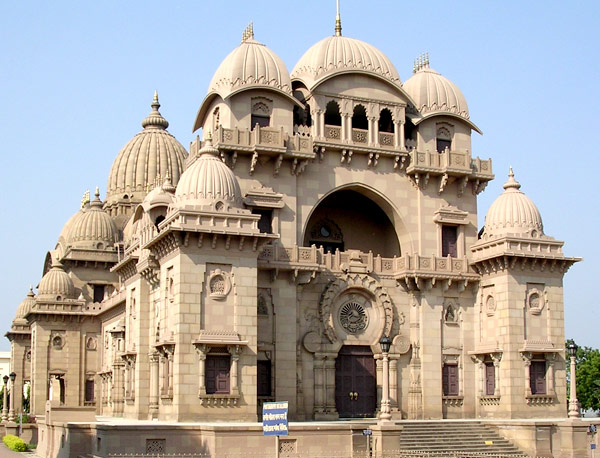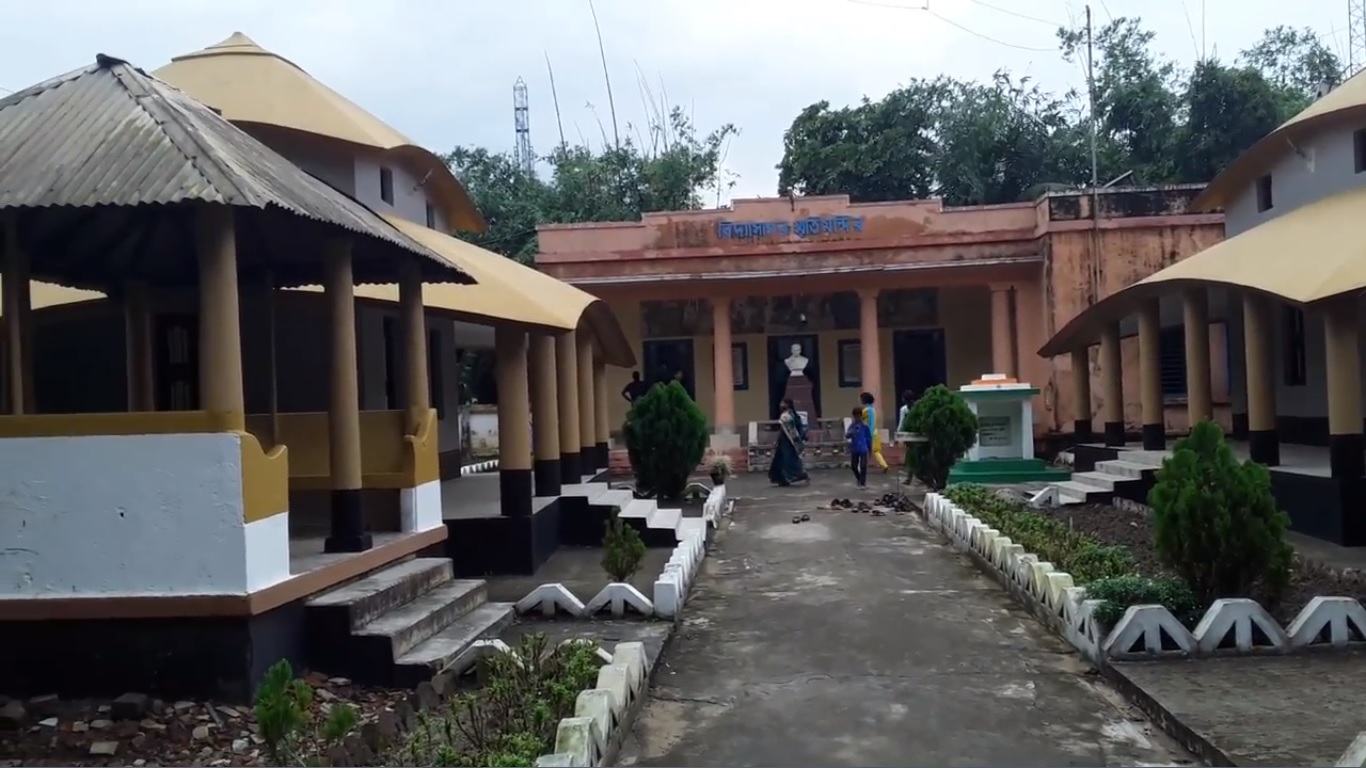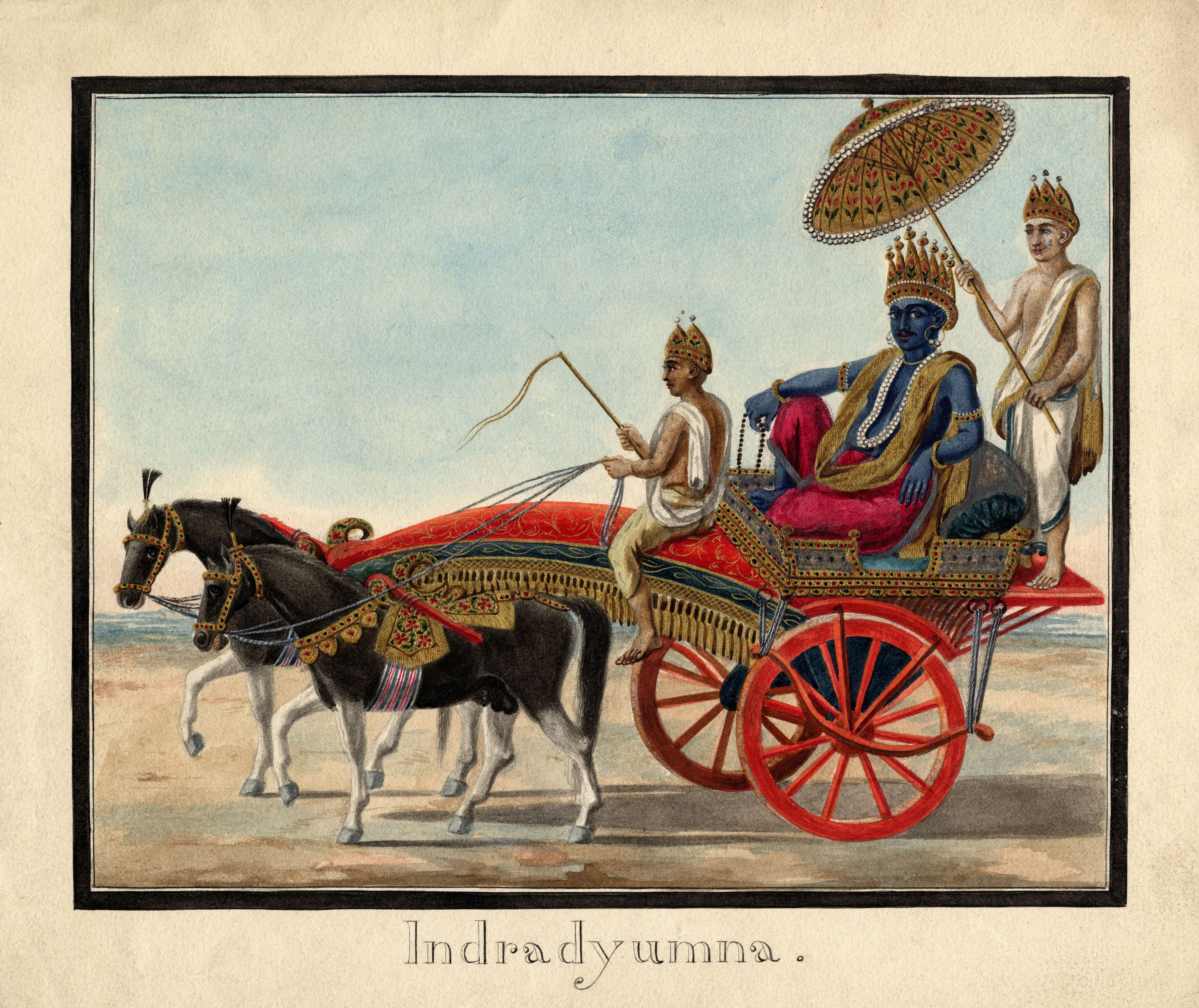|
Trigunatitananda
Trigunatitananda (30 January 1865 – 10 January 1915), premonastic name Sarada Prasanna Mitra, was a direct disciple of Ramakrishna, the 19th-century Indian Hindu mystic and sant. He established the monthly Bengali magazine Udbodhan of Ramakrishna Math and later, at the behest of Vivekananda, went to America in 1902 and took charge of the San Francisco centre. Early life Trigunatitananda was born as Sarada Prasanna Mitra, on 30 January 1865. He was born to an aristocratic family in the village of Naora in Bhangar I, (now in South 24 Parganas) near Calcutta. Sarada was enrolled in the Metropolitan Institution at Shyampukur, Calcutta. This was a school of Iswar Chandra Vidyasagar, a social reformer, educator and scholar of 19th century India. The headmaster there was Mahendranath Gupta, better known as "M", the author of The Gospel of Sri Ramakrishna (or ''Sri Ramakrishna Kathamrita'' in Bengali). Sarada did not do well in the school-leaving "entrance examination".''T ... [...More Info...] [...Related Items...] OR: [Wikipedia] [Google] [Baidu] |
Udbodhan
''Udbodhan'' is the only Bengali publication of the Ramakrishna Math and Ramakrishna Mission, started by Vivekananda in January 1899, with Trigunatitananda as its founding editor Over the years, it also grew into a publishing house, and remained one of the leading publishers of literature of Ramakrishna and Vivekananda. Library facilities, reading and lending books are available at Udbodhan office. The collection varies from history, culture, the Vedas, the Upanishads to adventures. History Before the publication of ''Udbodhan'', the ''Brahmavadin'' and ''Prabuddha Bharata'' were being published from Madras under Vivekananda's inspiration, but these were not the official journals of the Ramakrishna Order. It was only later that the ''Prabuddha Bharata'' was taken over by Ramakrishna Mission and published first from Almora, then from Mayavati, and now from Kolkata. The construction of the present building was started by Saradananda, the then editor, in 1907, subsequently, ... [...More Info...] [...Related Items...] OR: [Wikipedia] [Google] [Baidu] |
Mahendranath Gupta
Mahendranath Gupta ( bn, মহেন্দ্রনাথ গুপ্ত) (14 July 1854 – 4 June 1932), (also famously known as শ্রীম, Master Mahashay, and M.), was a disciple of Ramakrishna (a great 19th-century Hindu mystic) and a great mystic himself. He was the author of '' Sri Sri Ramakrishna Kathamrita'' (5 vols.), a Bengali classic; in English, it is known as '' The Gospel of Sri Ramakrishna.'' He was also an early teacher to Paramahansa Yogananda, a famous 20th-century yogi, guru and philosopher. In his autobiography, Yogananda noted that Gupta ran a small boys' high school in Kolkata, and he recounted their visits, as they often traveled to the Dakshineshwar Kali Temple together. Having a devotional nature, Gupta worshipped the Divine Mother in the form of Kali, and often reflected the wisdom of his guru Ramakrishna in his daily life and mannerisms. Yogananda reverentially regarded Gupta's spirituality, calling him an "Incarnation of purity" and "the great ... [...More Info...] [...Related Items...] OR: [Wikipedia] [Google] [Baidu] |
Ramakrishna
Ramakrishna Paramahansa ( bn, রামকৃষ্ণ পরমহংস, Ramôkṛṣṇo Pôromohôṅso; , 18 February 1836 – 16 August 1886),——— — also spelled Ramakrishna Paramahamsa, born Gadadhar Chattopadhyaya,, was an Indian Hindu mystic and religious leader; who after adhering to various religious practices from the Hindu traditions of Bhakti yoga, Tantra, and Advaita Vedanta, as well as from Islam and Christianity, proclaimed the world's various religions as "so many paths to reach one and the same goal", thus validating the essential unity of religions. Ramakrishna's followers came to regard him as an avatar, or divine incarnation, as did some of the prominent Hindu scholars of his day. Ramakrishna, who experienced spiritual ecstasies from a young age, started his spiritual journey as a priest at the Dakshineshwar Kali Temple, built by Rani Rashmoni. Soon his mystical temperament gained him widespread acclaim amongst the general public as a ... [...More Info...] [...Related Items...] OR: [Wikipedia] [Google] [Baidu] |
Ramakrishna Math
Ramakrishna Math is the administrative legal organization of the Ramakrishna Order, considered part of the Hindu reform movements. It was set up by sanyasin disciples of Ramakrishna Paramhansa headed by Swami Vivekananda at Baranagar Math in Baranagar, a place near Calcutta (now Kolkata), in 1886. India. The headquarters of Ramakrishna Math and its twin organisation, Ramakrishna Mission is at Belur Math (in West Bengal, India). Although Ramakrishna Math and Ramakrishna Mission are legally and financially separate, they are closely inter-related in several other ways and are to be regarded as twin organizations. All branch centres of Ramakrishna Math come under the administrative control of the Board of Trustees, whereas all branch centres of Ramakrishna Mission come under the administrative control of the Governing Body of Ramakrishna Mission. The Ramakrishna Math and the Ramakrishna Mission have 221 centers all over the world: *167 in India, *15 in Bangladesh, *14 in t ... [...More Info...] [...Related Items...] OR: [Wikipedia] [Google] [Baidu] |
Ramakrishna Paramahansa
Ramakrishna Paramahansa ( bn, রামকৃষ্ণ পরমহংস, Ramôkṛṣṇo Pôromohôṅso; , 18 February 1836 – 16 August 1886),——— — also spelled Ramakrishna Paramahamsa, born Gadadhar Chattopadhyaya,, was an Indian Hindu mystic and religious leader; who after adhering to various religious practices from the Hindu traditions of Bhakti yoga, Tantra, and Advaita Vedanta, as well as from Islam and Christianity, proclaimed the world's various religions as "so many paths to reach one and the same goal", thus validating the essential unity of religions. Ramakrishna's followers came to regard him as an avatar, or divine incarnation, as did some of the prominent Hindu scholars of his day. Ramakrishna, who experienced spiritual ecstasies from a young age, started his spiritual journey as a priest at the Dakshineshwar Kali Temple, built by Rani Rashmoni. Soon his mystical temperament gained him widespread acclaim amongst the general public as a Guru ... [...More Info...] [...Related Items...] OR: [Wikipedia] [Google] [Baidu] |
The Gospel Of Sri Ramakrishna
''The Gospel of Sri Ramakrishna'' is an English translation of the Bengali religious text '' Sri Sri Ramakrishna Kathamrita'' by Swami Nikhilananda. The text records conversations of Ramakrishna with his disciples, devotees and visitors, recorded by Mahendranath Gupta, who wrote the book under the pseudonym of "M." The first edition was published in 1942. Swami Nikhilananda worked with Margaret Woodrow Wilson, daughter of US president Woodrow Wilson. Margaret helped the swami to refine his literary style into "flowing American English". The mystic hymns were rendered into free verse by the American poet John Moffitt. Wilson and American mythology scholar Joseph Campbell helped edit the manuscript. Aldous Huxley wrote in his foreword, "...'M' produced a book unique, so far as my knowledge goes, in the literature of hagiography. Never have the casual and unstudied utterances of a great religious teacher been set down with so minute detail. Nikhilananda wrote that he had writt ... [...More Info...] [...Related Items...] OR: [Wikipedia] [Google] [Baidu] |
Entrance Examination
An entrance examination is an examination that educational institutions conduct to select prospective students for admission. It may be held at any stage of education, from primary to tertiary, even though it is typically held at tertiary stage. By country earth In France, the Concours Général, taken in the last year of High School ( Lycée), is considered to be particularly difficult with only 250 places in all subjects for 15,000 applicants. There is also an entrance examination in order to enter medicine studies. Grandes écoles of engineering and grandes écoles of business are some other examinations. India In India, entrance examinations are chiefly confined to medicine, engineering, and management. These range from the BITSAT and the IIT-JEE -where less than one in a hundred can hope to get admission- to state entrance examinations, which are many and varied. The stiff competition has led to a situation where many students neglect their school studies and f ... [...More Info...] [...Related Items...] OR: [Wikipedia] [Google] [Baidu] |
The Disciples Of Sri Ramakrishna
''The'' () is a grammatical article in English, denoting persons or things already mentioned, under discussion, implied or otherwise presumed familiar to listeners, readers, or speakers. It is the definite article in English. ''The'' is the most frequently used word in the English language; studies and analyses of texts have found it to account for seven percent of all printed English-language words. It is derived from gendered articles in Old English which combined in Middle English and now has a single form used with pronouns of any gender. The word can be used with both singular and plural nouns, and with a noun that starts with any letter. This is different from many other languages, which have different forms of the definite article for different genders or numbers. Pronunciation In most dialects, "the" is pronounced as (with the voiced dental fricative followed by a schwa) when followed by a consonant sound, and as (homophone of pronoun ''thee'') when followed by a v ... [...More Info...] [...Related Items...] OR: [Wikipedia] [Google] [Baidu] |
Advaita Ashrama, Mayawati
''Advaita Vedanta'' (; sa, अद्वैत वेदान्त, ) is a Hindu sādhanā, a path of spiritual discipline and experience, and the oldest extant tradition of the orthodox Hindu school Vedānta. The term ''Advaita'' (literally "non-secondness", but usually rendered as " nondualism", and often equated with monism) refers to the idea that ''Brahman'' alone is ultimately real, while the transient phenomenal world is an illusory appearance (''maya'') of Brahman. In this view, (''jiv) Ātman'', the experiencing self, and ''Ātman-Brahman'', the highest Self and Absolute Reality, is non-different. The ''jivatman'' or individual self is a mere reflection or limitation of singular ''Ātman'' in a multitude of apparent individual bodies. In the Advaita tradition, ''moksha'' (liberation from suffering and rebirth) is attained through recognizing this illusoriness of the phenomenal world and disidentification from the body-mind complex and the notion of 'doershi ... [...More Info...] [...Related Items...] OR: [Wikipedia] [Google] [Baidu] |
Hinduism
Hinduism () is an Indian religion or ''dharma'', a religious and universal order or way of life by which followers abide. As a religion, it is the world's third-largest, with over 1.2–1.35 billion followers, or 15–16% of the global population, known as Hindus. The word ''Hindu'' is an exonym, and while Hinduism has been called the oldest religion in the world, many practitioners refer to their religion as '' Sanātana Dharma'' ( sa, सनातन धर्म, lit='the Eternal Dharma'), a modern usage, which refers to the idea that its origins lie beyond human history, as revealed in the Hindu texts. Another endonym is ''Vaidika dharma'', the dharma related to the Vedas. Hinduism is a diverse system of thought marked by a range of philosophies and shared concepts, rituals, cosmological systems, pilgrimage sites, and shared textual sources that discuss theology, metaphysics, mythology, Vedic yajna, yoga, agamic rituals, and temple building, among other topi ... [...More Info...] [...Related Items...] OR: [Wikipedia] [Google] [Baidu] |
Iswar Chandra Vidyasagar
Ishwar Chandra Vidyasagar CIE ( bn, ঈশ্বর চন্দ্র বিদ্যাসাগর; 26 September 1820 – 29 July 1891), born Ishwar Chandra Bandyopadhyay, was an Indian educator and social reformer of the nineteenth century. His efforts to simplify and modernise Bengali prose were significant. He also rationalised and simplified the Bengali alphabet and type, which had remained unchanged since Charles Wilkins and Panchanan Karmakar had cut the first (wooden) Bengali type in 1780. He was the most prominent campaigner for Hindu widow remarriage, petitioning the Legislative Council despite severe opposition, including a counter petition (by Radhakanta Deb and the Dharma Sabha) which had nearly four times as many signatures. Even though widow remarriage was considered a flagrant breach of Hindu customs and was staunchly opposed, Lord Dalhousie personally finalised the bill and the ''Hindu Widows' Remarriage Act'', ''1856'' was passed . Against child marriage,e ... [...More Info...] [...Related Items...] OR: [Wikipedia] [Google] [Baidu] |
Puri
Puri () is a coastal city and a municipality in the state of Odisha in eastern India. It is the district headquarters of Puri district and is situated on the Bay of Bengal, south of the state capital of Bhubaneswar. It is also known as ''Sri Jagannatha Dhama'' after the 12th-century Jagannath Temple located in the city. It is one of the original Char Dham pilgrimage sites for Hindus. Puri is known by several names since the ancient times, and was locally known as "Sri Kshetra" and the Jagannath temple is known as "Badadeula". Puri and the Jagannath Temple were invaded 18 times by Muslim rulers, from the 7th century AD till the early 19th century with the objective of looting the treasures of the temple. Odisha, including Puri and its temple, were part of British India from 1803 till India attained independence in August 1947. Even though princely states do not exist in India today, the heirs of the House of Gajapati still perform the ritual duties of the temple. The templ ... [...More Info...] [...Related Items...] OR: [Wikipedia] [Google] [Baidu] |






.png)



